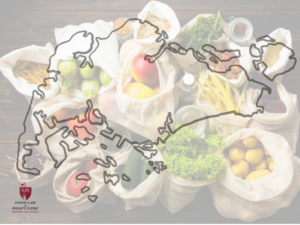Originally published by The Columbian on June 19, 2017. Written by Marissa Harshman, Columbian Health Reporter.
An estimated 160 billion pounds of food is wasted in the U.S. every year—and much of the food may be perfectly fine to eat. A recent survey found 84 percent of people at least sometimes throw away food solely because the “best by” date stamped on the package has passed.
The problem: Those dates aren’t an indicator of food spoilage or safety.
“The whole dating thing is kind of confusing, because people want to throw away things after these dates,” said Sandra Brown, food safety and nutrition faculty at Washington State University Clark County Extension. “The key to all of those dates is all about quality.”
Federal law only requires a “use by” date on infant formula under inspection of the U.S. Food and Drug Administration. Baby formula should not be used after its “use by” date, according to the FDA, because the quality of the formula may deteriorate and not meet the nutritional claims on the label.
The dates stamped on all other food products—and the varying descriptions, such as “best before,” “best if used by” and “sell by”—are done voluntarily and at the discretion of food manufacturers.
And they have nothing to do with whether the food is safe to eat or not.
“Best if used by/before” indicates when a product will be of best flavor or quality. Likewise, a “use by” date is the last date recommended for the use of the product at its peak quality. A “sell by” date, on the other hand, is for the stores and indicates when the store should no longer display the product, according to the FDA.
A May 2016 survey by the Harvard Food Law and Policy Clinic highlighted the confusion over date labels. About 70 percent of people believed “best if used by” referred to food quality and 13 percent thought it indicated safety. But only 40 percent thought “use by” was pertaining to quality, while 42 percent believed it related to food safety.
That confusion may be leading people to throw away perfectly safe food, the researchers concluded. Of the survey participants, more than one-third said they always discard food close to or past the date on the label; 84 percent said they do so at least occasionally.
Foods not showing signs of spoilage should still be wholesome and can be sold, purchased, donated and consumed beyond the labeled “best by” date, according to the FDA. So how do you know if a food product is safe to eat?
“In general, if it looks bad, smells bad, has a poor texture, of course you won’t eat it,” Brown said.
But food can look OK and still make you sick. The key, Brown said, is to properly handle perishable foods to prevent bacteria growth.
There are two types of bacteria that grow in food. The pathogenic bacteria causes foodborne illness that can make you sick. Spoilage bacteria causes food to deteriorate but doesn’t cause illness.
To prevent pathogenic bacteria growth, perishable foods shouldn’t be out of the refrigerator more than two hours. That includes both store-bought food and homemade dishes. In addition, use clean utensils, particularly with products that will be used multiple times, such as containers of mayonnaise or yogurt, Brown said.
There are also general timelines for how long an opened food item is safe in the refrigerator. Opened milk and cottage cheese, for example, should be consumed within one week. Refrigerated eggs, on the other hand, are good for three to five weeks from the date of purchase, according to the FDA.
Opened packages of lunch meat are good for three to five days, whereas unopened packages last for two weeks. Fresh poultry and ground meats should be consumed within one to two days, while fresh beef, lamb and pork is good for three to five days in the refrigerator, according to the FDA.
The length of time is considerably longer when it comes to shelf-stable foods. Canned foods, for example, will be good 12 to 18 months beyond those stamped dates on the cans. And some lower acidity canned foods, such as tuna or chicken, can last two to five years past the date, Brown said.
With those items, the concern is more about quality than safety. If you’re concerned about the quality of canned foods that are well past their “best by” dates, consider using them in stews or casseroles where the texture isn’t as important, Brown said.
Following these guidelines and using some common sense can help you to avoid throwing away food that is perfectly safe to eat, Brown said.
“There is a lot of food that people throw away that is fine,” she said. “Really check out food before you throw it away.”


Health Law & Policy, Commentary
What the Election Could Mean for Medicaid – Health Care on the Ballot
October 21, 2024